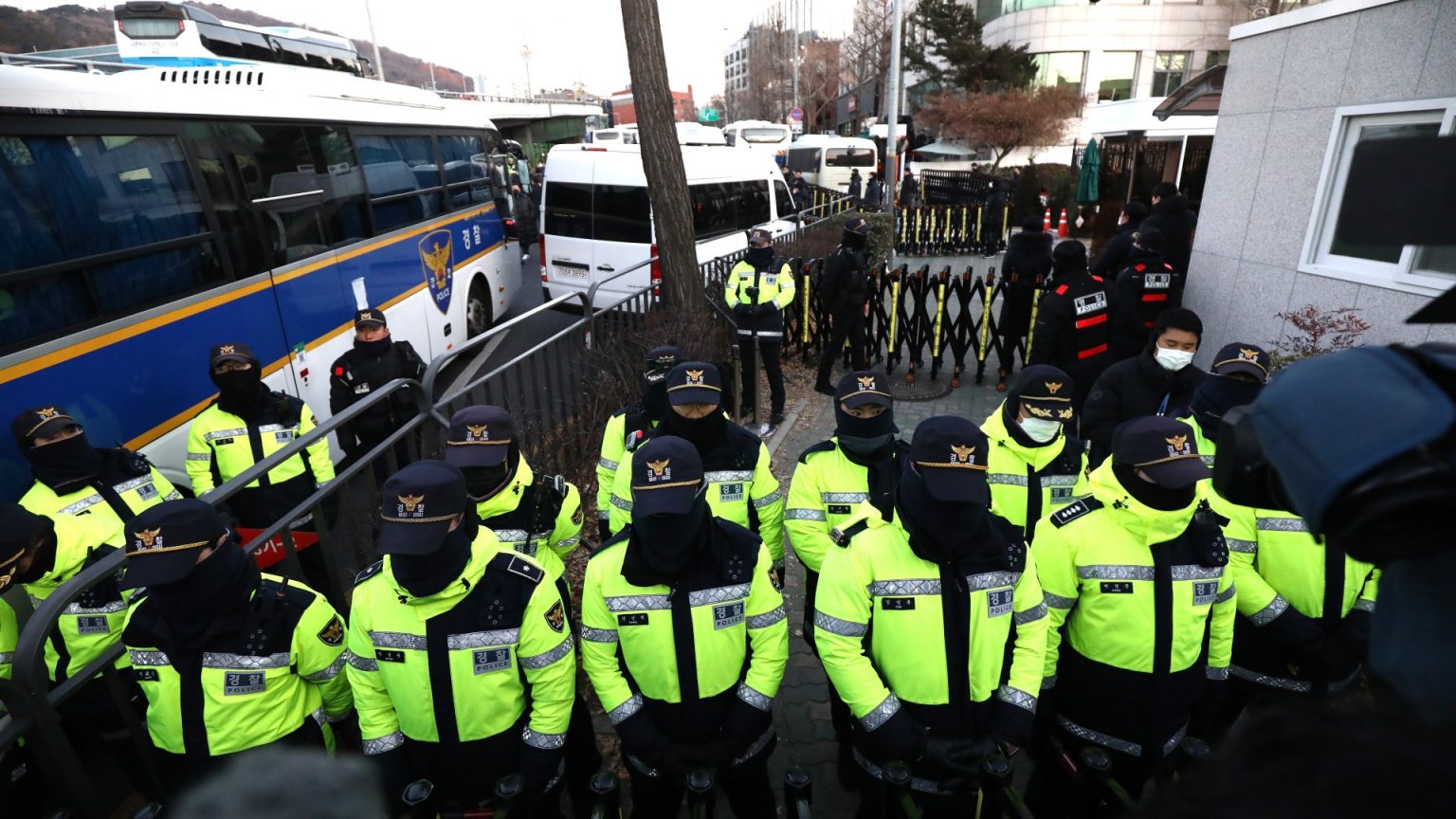The political landscape of South Korea has been embroiled in a high-stakes standoff, stemming from an unprecedented attempt to arrest the impeached president, Yoon Suk Yeol. The attempted arrest, orchestrated by the Corruption Investigation Office (CIO) following a warrant issued on charges of abuse of power and insurrection, was dramatically thwarted by a formidable human barricade composed of Yoon’s loyal supporters, presidential guards, and military personnel. This six-hour standoff underscored the deep political divisions within the country and the precariousness of Yoon’s position after his impeachment by parliament.
The CIO’s attempt to execute the arrest warrant at Yoon’s residence was met with fierce resistance from a throng of supporters who had encircled the compound before dawn. These loyalists, vowing to protect Yoon “with their lives,” presented a significant obstacle for the authorities. Despite managing to breach the outer perimeter, the CIO and police forces were confronted by a tightly knit human shield formed by approximately 200 Presidential Security Service (PSS) guards and soldiers. This layered defense effectively blocked access to the president, leading to a tense standoff without any reported use of weapons. Ultimately, concerns over the safety of their personnel forced the CIO to abandon the arrest attempt.
The failed arrest attempt has further intensified the political turmoil engulfing South Korea. The CIO expressed “deep regret” at Yoon’s refusal to cooperate and announced investigations into the PSS chief and deputy for obstruction of official duty. Yoon’s legal team, meanwhile, condemned the CIO’s actions, characterizing the attempted arrest as an “illegal and invalid” operation within a sensitive security zone. The clash underscores the ongoing power struggle between the impeached president and the parliament, raising questions about the legitimacy of the impeachment process and the extent of Yoon’s remaining authority.
The backdrop of this dramatic standoff is the controversial series of events leading to Yoon’s impeachment. The president’s attempt to impose martial law in December, allegedly involving an order to forcibly enter the parliament building, sparked widespread public outrage and protests. Though the martial law decree was swiftly rescinded in response to public pressure, the damage had been done. Parliament initiated an investigation into the alleged power grab, culminating in Yoon’s impeachment on December 14th. Despite the overwhelming vote, which included members of his own party, Yoon has refused to concede, further complicating the already volatile situation.
The ongoing crisis in South Korea presents a complex and unprecedented scenario. Never before has a sitting president faced an arrest warrant, leaving the country in uncharted territory. While the impeachment technically stripped Yoon of his powers, his refusal to acknowledge the process creates ambiguity about where authority truly resides. The staunch support he retains from a segment of the population further muddies the waters, adding another layer of complexity to the question of legitimacy. The validity of the arrest warrant extending until January 6th leaves the door open for further attempts to apprehend Yoon, potentially escalating tensions and prolonging the political uncertainty.
This situation has exposed the fragility of South Korea’s political system and the challenges of navigating an unprecedented constitutional crisis. The standoff between the impeached president and the parliament, the involvement of loyal supporters and security forces, and the absence of a clear legal precedent create a volatile mix. The coming days and weeks will be crucial in determining the course of this crisis and the future of South Korean democracy. The outcome will inevitably shape not only the political landscape but also the public’s trust in the institutions designed to uphold the rule of law.











